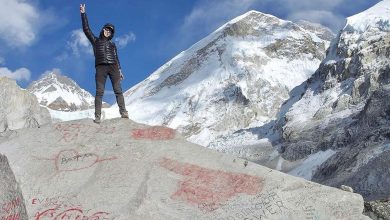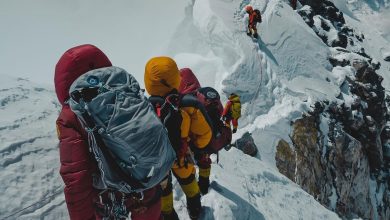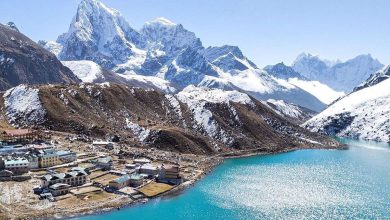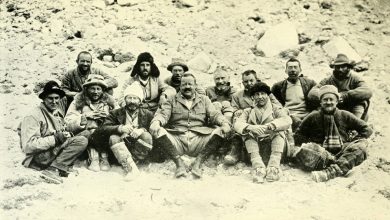How High Is Everest Base Camp?
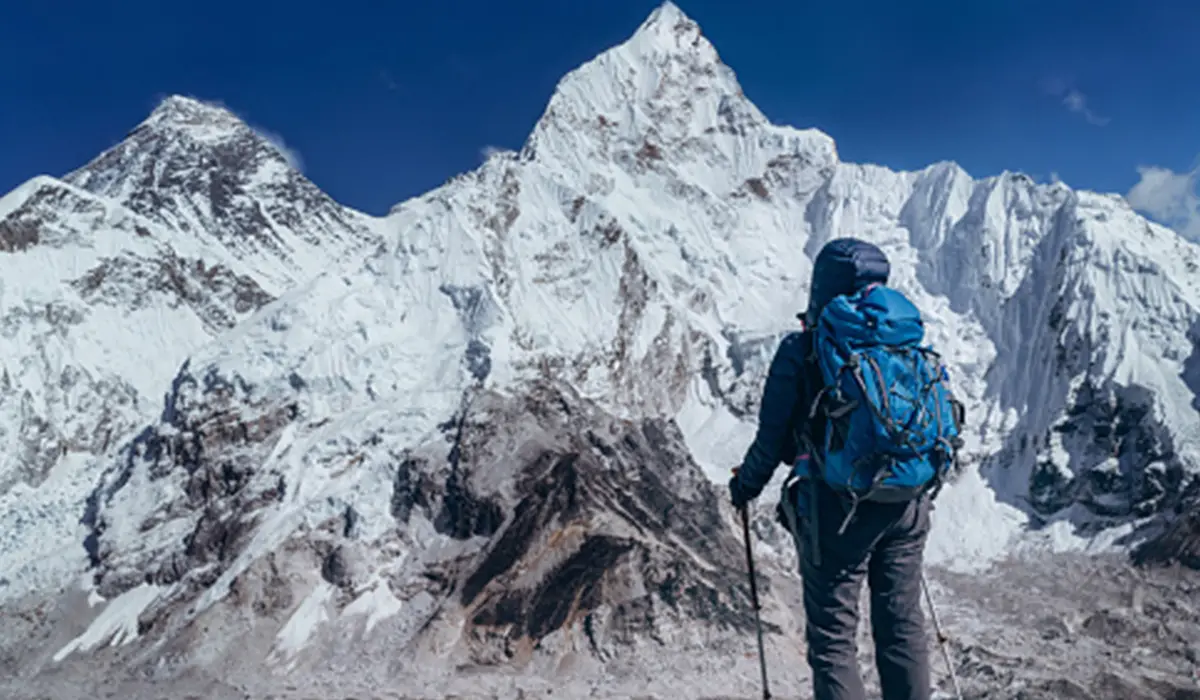

Everest Base Camp’s height is 5,364 meters from sea level.
Whenever trekking is mentioned, all eyes are on Everest Base Camp, which hosted visitors all its life. The daydream of every adventure buff and mountaineer’s fairground, Everest Base Camp, is impeccably gorgeous.
It’s arguably the most popular trekking site in the Himalaya with staggering natural beauty, deep gorges, and vivacious valleys. Visitors are amazed by how astonishing it looks with all the scenic waterfalls, sparkling lakes, and rocky terrain.
There’s nothing like riding around the classic trails of Base Camp that offers enthralling sceneries. In sum, the medieval town, dome-shaped monasteries, sweeping hills, and landscapes make the trek to camp much better.
Sitting on the lap of the Himalayas, Everest Base Camp soars up to 5,364 meters high from sea level. Moreover, it exceeds a series of towering mountain ridges, steppe tracks, and valleys before winding up on the foot of Mt. Everest.
Spreading out 33 miles along Chukhung Valley, Everest Base Camp is a long but pretty easy walk. The trail runs from a small town in Khumbu to all the way up Everest’s base at 17,500 ft. high.
It takes nearly two weeks to roll in the base camp from the village of Lukla. Also, the trek involves sailing a series of ancient trails with eye-striking clifftops, religious monasteries, verdure forests, and icefalls.
Highlights of Everest Base Camp Trek
- Breathtaking view of towering mountains such as Nuptse and Thamserku
- Discover the rich culture and heritage of people of different ethnicity
- A quick tour of the Tengboche monastery and its beautiful construction
- Exploring indigenous wildlife and vegetation
- Scrambling Kala Patthar to see the dazzling Everest and Pumori
- Visiting Sherpa Culture Museum to watch the beautiful architecture
How to reach Everest Base Camp?
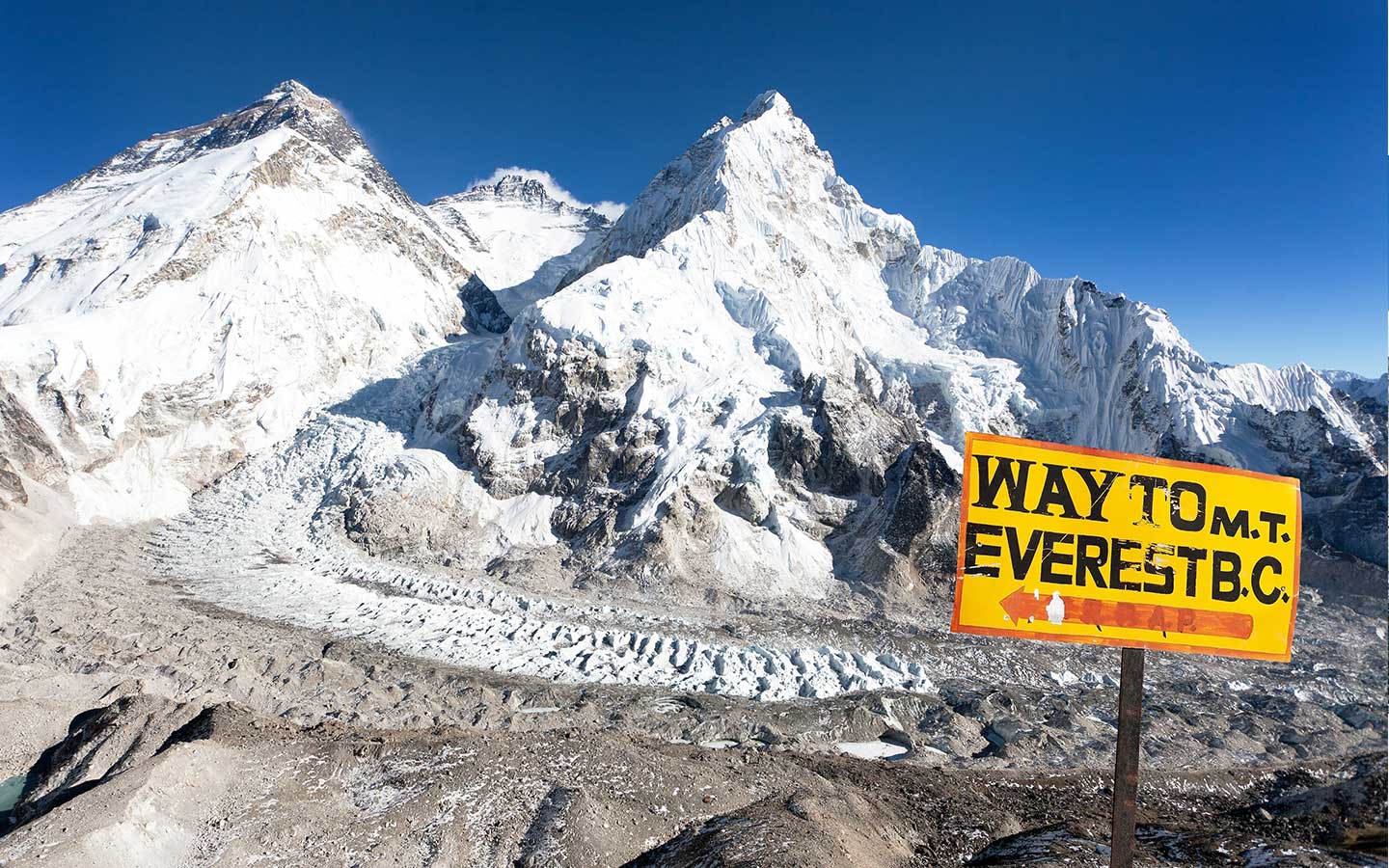
Still crowned as the world’s highest mountain, Everest Base Camp lies in the Khumbu region. It’s enclosed by towering rock cliffs and snow-capped mountains, including Cho Oyu and Nuptse.
The remarkable journey begins with a short yet picturesque flight to Lukla that lasts almost half-hour. The trip comes just before the trail walking off the Dudh Koshi River’s left bank to end up at Phakding.
The route follows a steep hill from here and crosses the turbulent river on a suspension bridge to reach Namche Bazaar. Many trekkers spend a day or two at this famous Sherpa village to adapt to the weather and explore the town.
While some choose to stroll the village, others take a walk to Syangboche to catch a glimpse of Everest. After Namche, the trail ascends rugged hills beside mani walls and Tibetan stupa to meet the beautiful village of Tengboche.
The path ahead is a rollercoaster ride with deep valleys and highlands to traverse for almost 5 hours. With most of the trails rising uphill, it’s tough to keep pace at the get-go. But, after coming off the ground level, the trek gets a little easier, followed by some fantastic sights of Ama Dablam and Tengboche monastery.
Next on the way to Base Camp is charming Dingboche village, stretching almost 7 miles from the village. The walk from Tengboche to Dingboche is continuously upward, passing through remote villages and Chukhung Valley.
Trekkers will initially follow the rugged hills downward, come across the river, and scramble along the river valley to arrive at the small village of Dingboche. The classic trail of Base Camp continues to lead its way to Lobuche with the steep ascent from the edge of the hill and passes rural settlements.
On the following day, trekkers head to Base Camp, walking the rugged trail with a mix of rocks and boulders. The journey to Gorak Shep takes nearly 3 hours, depending on the pace of a climber. The trail ascends uphill and to the glacial moraine from the brink of the frozen lakebed before finishing at the base camp.
Standing at 5,364 meters, visitors will get a breathtaking view of glistening mountains, beautiful glacial lakes, and cliff faces. They can easily catch sight of several snow peaks, including Ama Dablam, Thamserku, and Kangtega. After the exploration is over, trekkers will retrace the steps back to Gorak Shep.
Later on the day, the trail reaches up to 18,513 ft. high in Kala Patthar to unfurl elfin landscapes and snowy peaks. Visitors can peek out as many mountains as possible, including Nuptse, Everest massif, and Pumori. Once the sightseeing is done, trekkers will descend the trail to Pheriche, passing the lofty hills, old Chortens, and memorials.
From here, trekkers will gently climb down the hills and through the forest to Namche. They will finish off the trek by descending to Lukla via Monjo and seemingly take the flight to Kathmandu.
Outline Itinerary
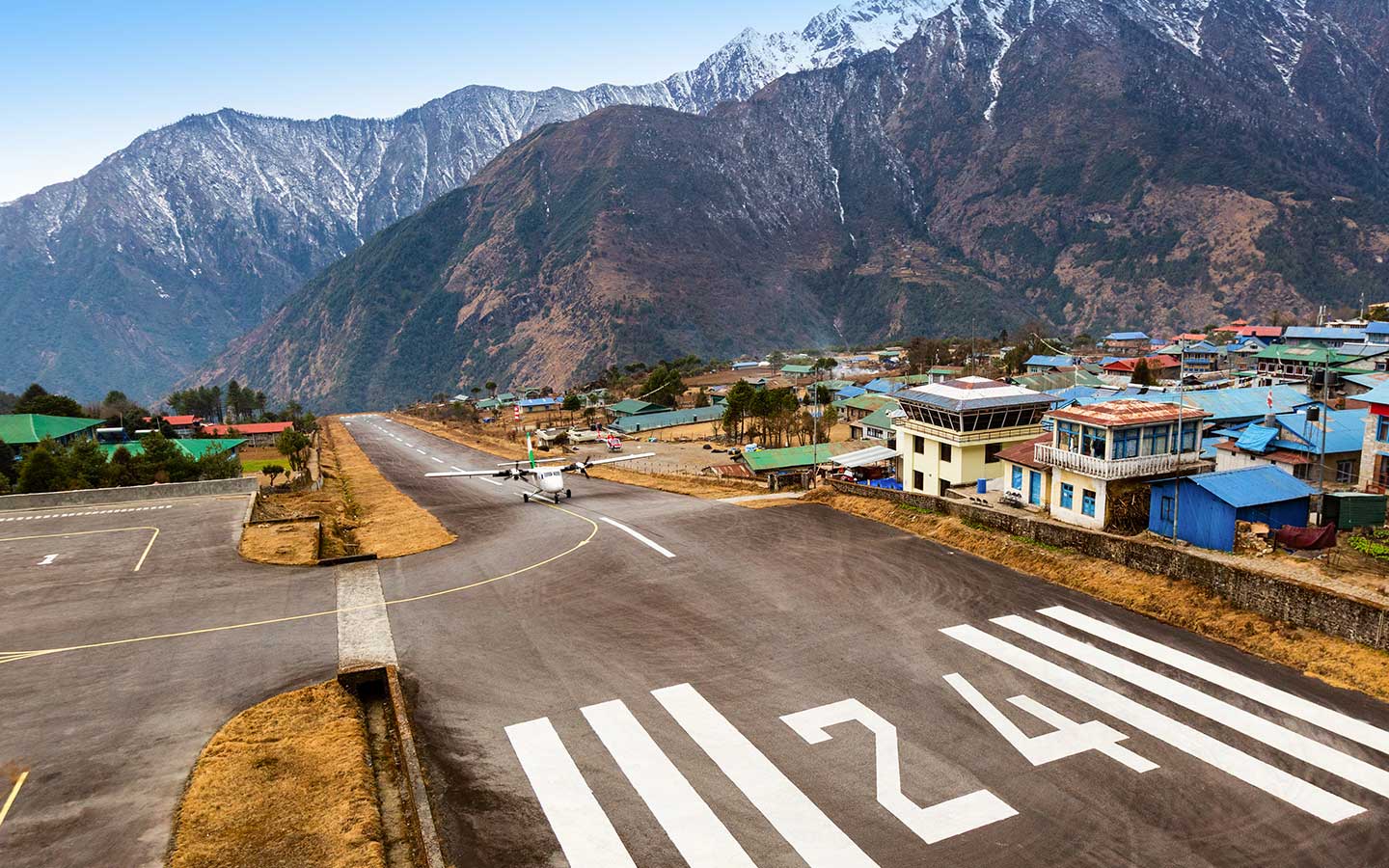
Day 01: Flight to Lukla, Trek to Phakding, (2,610 m), 2-3 hrs
Day 02: Trek to Namche (3,500 m), 2-3 hrs
3rd Day: Acclimatization day
Day 04: Trek to Tengboche (3,860 m), 4-5 hrs
Day 05: Trek to Dingboche (4,360 m), 3-4 hrs
6th Day: Trek to Lobuche (4,950 m), 5 hrs
Day 07: Hike to Gorak Shep, 2-3 hrs Trek to Everest Base Camp (5,364 m), 2 hrs, and return
Day 08: Trek to Kala Patthar (5,644 m), Hike to Pheriche, 8-9 hrs
9th Day : Trek to Namche Bazaar (3,440 m), 5-6 hrs
Day 10: Trek to Lukla (2,860 m) 3-4 hrs
Day 11 Fly back to Kathmandu (1,400 m), 40 min
When is the best time to travel to Everest Base Camp?
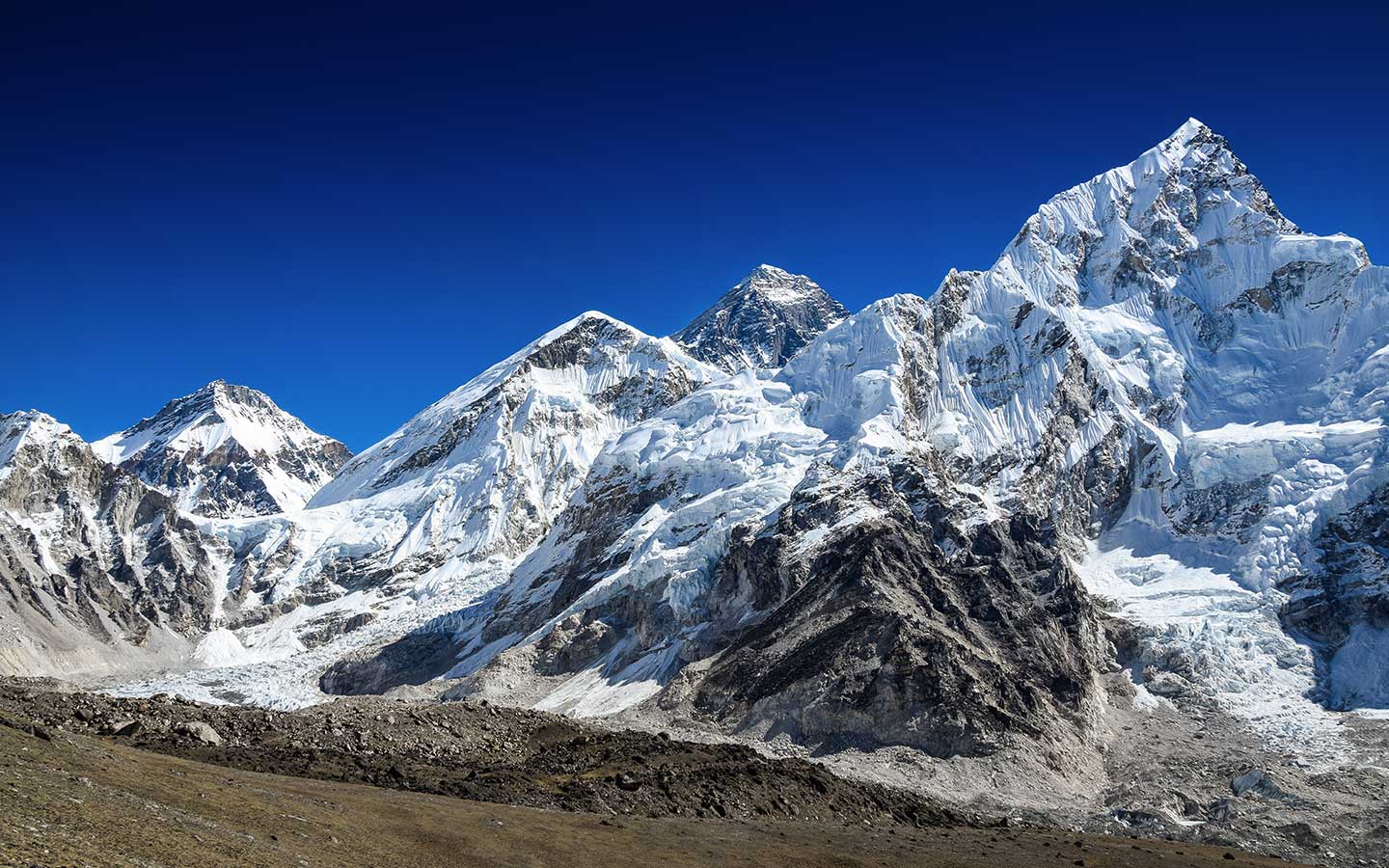
Fall is the most incredible time to visit base camp if you’re looking forward to a splendid view and tranquil atmosphere. The delightful weather, mesmeric scenes, autumn crowds, and mellow sound of birds everything make the season terrific.
Squash between blistering hot summer and freezing winter, autumn sweeps lovely weather. Temperature ranges from 5-18 Degree Celsius in the month, with nights getting chilly, cold and days, warm and fuzzy.
The changing color of tree leaves with a stiff breeze makes the journey a lot better than it already is. Hikers will get a crystal-clear view of snow-capped mountains, diverse landscapes, and glaciers from long-way-off.
Spring has the eye of most trekkers fetching warm weather and majestic sceneries. The chilly wind fades with the arrival of a season while days get longer. Trekkers can feel the freshness in the air along with some warm daylight.
The climate is quite tempting during the season, with a mild temperature ranging from 0-15 Degree Celsius. Days are often beautiful with radiant sunshine, brisk wind, and astonishing natural vista that can be relished all day long.
Scrambling Everest Base Camp in spring is rewarding with lush-green pastures, crisp-clean air, and Visitors have a better shot of clasping their eyes on the unique flora and fauna in Sagarmatha National Park.
The backdrop is scintillating with blooming rhododendron forests, gorgeous hills, and staggering mountains all around. Apart from that, Everest Base Camp’s winding trail is clean and dry in spring, making it easier to navigate.
Although trekkers’ might have to think once before climbing the base camp in winter, they can easily walk the trail. The season stands out with mesmerizing sight of snow-capped houses and woods that are worth seeing in person.
The trails are less crowded in winter, following which visitors can have their moment while exploring the hot spots. Temperatures are below -17 Degree Celsius on mornings and nights. It’s why trekkers have to be highly cautious while walking the trail and take precautions.
You may also like:
- Everest View Trek 7 Days Itinerary
- Pikey Peak Trek – 7 Days Itinerary
- Gokyo Renjo La Pass Trek
- Ebc Chola Pass Gokyo Trek
Everest Base Camp Trekking routes
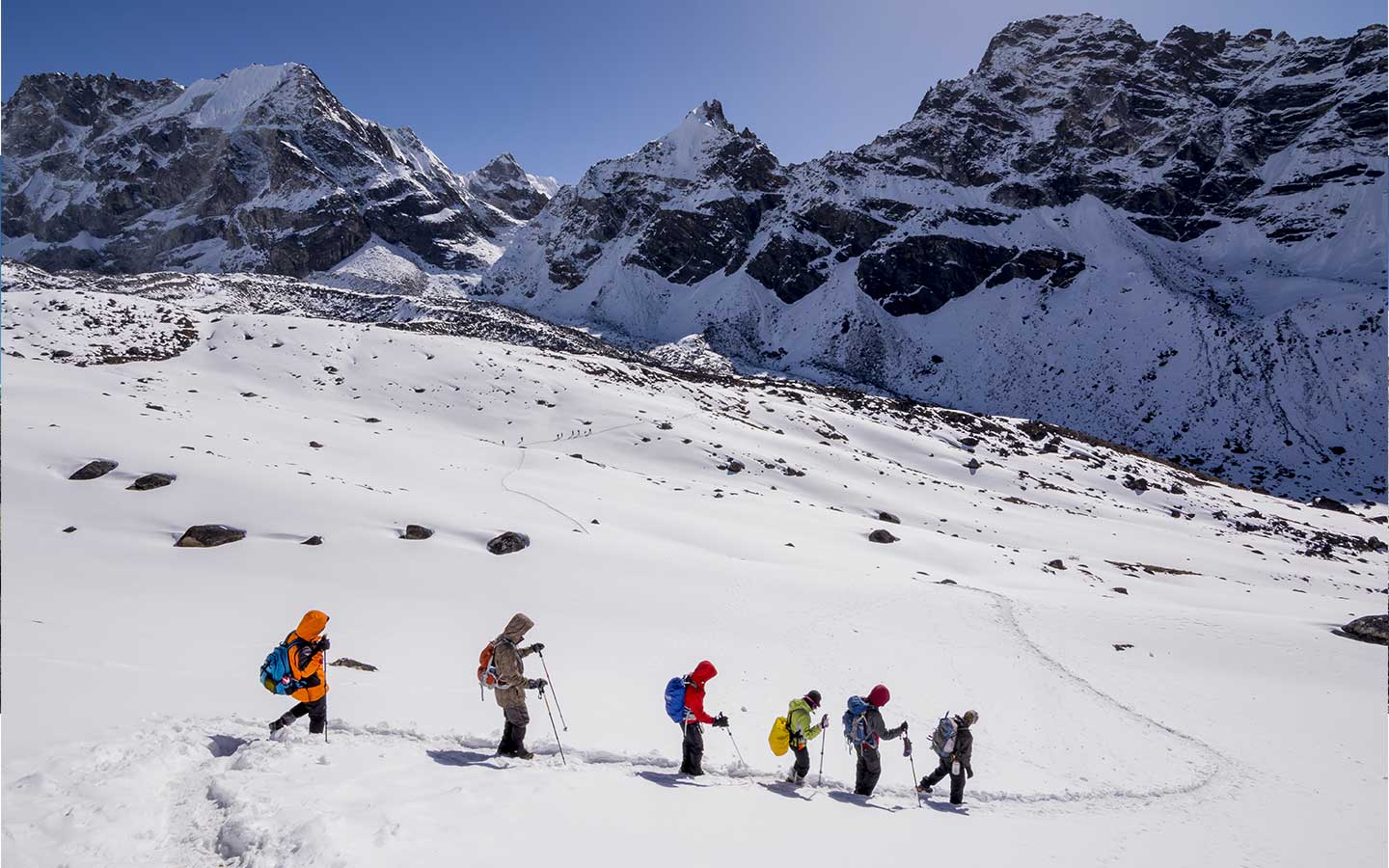
Everest Base Camp indeed has something that keeps drawing trekkers towards the site. The enchanting spot isn’t just the rocks and glaciers but rather a whole course with sparkling snow peaks and moraines.
There are many little-known trek routes along the way to the base camp, which can be done simultaneously. However, to do so, hikers need to buy some time and make preparations accordingly. From physical training to having a positive mindset, they’ll have to take care of everything to beat the rugged trail.
The spiral trek route of Everest Base Camp allows visitors to reach quite a few magnificent places. Usually, most of the famous trek destinations set off the journey from Lukla and successively cleaves the path to end up at different sites.
Everest Base Camp with Gokyo Ri Trek
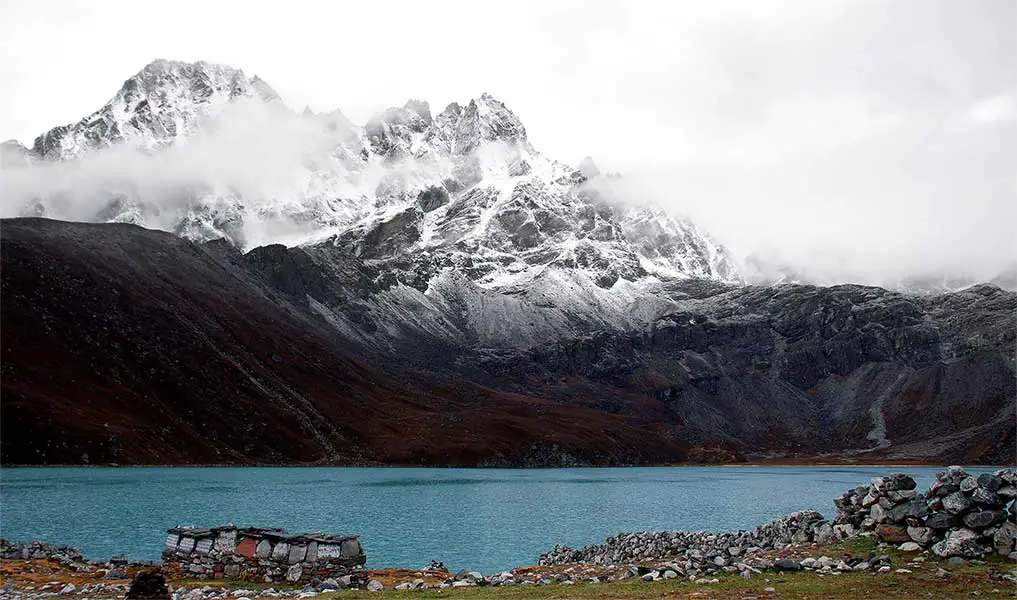
Everest Base Camp may be stellar in Khumbu, but Gokyo Ri is the real gem with sheer ice cliffs, intriguing geologic formations, and terminal moraines. The trek is clearly most fascinating of all, with comfortable sidewalks, geographical delights, and undulating hilltops.
Trekkers who’re pushed for time go for either one of the two treks. An avid mountaineer who wants to explore beyond the base camp prefers Everest Base Camp with Gokyo Ri Trek. The hike can be exhausting for hikers, especially beginners, following an endless walk, but it’s worthwhile, following pleasant scenery.
As with any other treks in Khumbu, Everest Base Camp with Gokyo Ri also sets off with a short flight to Lukla. Running from the town, the track passes many primordial Sherpa villages, rolling hills, and moraines to arrive at Gokyo Ri.
Most of the section has steep slopes on the way to base camp, which is somewhat arduous and nerve-wracking. It walks past small hamlets of Tengboche and Lobuche to get to the base camp, offering spellbinding views.
After descending the village in Gorak Shep, the trail heads to Gokyo Ri via Thangnak on a challenging course. Besides, the trek is quite intense, having to pass Cross Cho La and gently climb uphill from the south of Ngozumpa Glacier.
The highlight of a trek to Everest Base Camp and Gokyo Ri’s the mesmerizing glacial lakes, including Thonak and Taujun. Once the sightseeing is over, trekkers will climb their way down to Gokyo Ri and viscerally walk to Lukla.
The trail will be passing many villages, including Namche and Dole, to catch the flight to Lukla. For nearly three days, hikers will be steering the route through alpine forests and rolling hills.
Outline Itinerary:
Day 01: Flight to Lukla, Trek to Phakding (3,652 m), 2-3 hrs
Day 02: Trek to Namche Bazaar (3,440 m), 5-6 hrs
3rd Day: Trek to Dole (4,110 m), 5-6 hrs
Day 04: Trek to Machhermo (4,470 m) 5-6 hrs
Day 05: Trek to Gokyo (4,800 m), 5-6 hrs
6th Day: Explore Gokyo Valley, Hike to Gokyo Ri (5,357 m), Descend to Dole
Day 07: Trek to Dole (4,038 m), 5-6 hrs
Day 08: Trek to Namche Bazaar (3,500 m), 4-5 hrs
9th Day: Trek to Lukla (2,860 m), 6-7 hrs
Day 10: Flight to Kathmandu (1,400 m), 40 min
Everest Base Camp with three passes trek
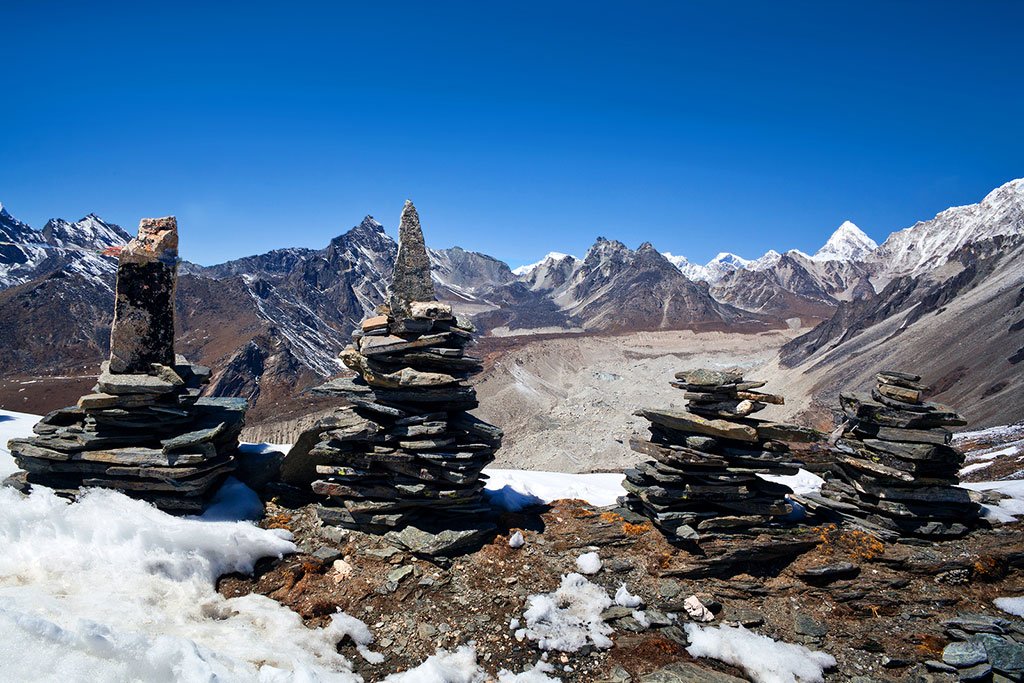
The austere charm of Three Passes Trek has lured trekkers for all these years, and it continues to do so. Its captivating highland, gigantic cliffs, gushing rivers, and sky-scraping mountains never fails to impress visitors.
That explains a lot why most trekkers who sign in for the Everest Base Camp hike also take a stroll through three passes. Unfortunately, due to its long-drawn trails and relatively greater difficulties, Three Passes Trek is looked upon as an alternative mountaineering route.
Like many other treks in Khumbu, Everest Base Camp with Three Passes also follows the iconic EBC trek route. Also, the hike involves walking the jagged trail, crossing rivers, and fighting deep valleys to make it to the base camp.
The course paves its way through the villages of Dingboche and Chukhung Valley. It then heads to Lobuche via Kongma La Pass, which offers terrific views. Also, trekkers can get a taste of heavenly landscapes, cascading waterfalls, and shimmering snow-peaks en route.
After arriving at the valley, the route turns east and crosses Cho La Pass to arrive at the base camp. At this point, the trekkers will get a sneak peek of glaring Gokyo Ri and sheer glaciers. The walk from Gokyo to Lungden is daunting with off-the-beaten-path, full of massive rocks and stones.
Furthermore, it’s quite hard for trekkers to combat the flimsy ice trails alongside Renjo La Pass to finish up at the base camp. The exertion, however, serves well as visitors will get to take the closest shot of Mt. Everest and beautiful landforms.
Everest Base Camp Three Passes Trek is as adventurous as it can get with pristine Everest, Nuptse, and Ama Dablam view. Travelers will get to sight the soul-stirring scenes of exquisite landscapes, Tibetan monasteries, and mani walls for most of the trek.
Outline Itinerary
Day 01: Flight to Lukla, Trek to Phakding (2,610 m), 3 hrs
Day 02: Trek to Namche Bazaar (3,440 m), 5-6 hrs
3rd Day: Trek to Tengboche (3,870 m), 4 hrs
Day 04: Trek to Dingboche (4,410 m), 6 hrs
Day 05: Ascend to Chhukhung (4,730 m), 3 hrs
6th Day: Rest day at Chukhung Valley
Day 07: Trek to Lobuche via Kongma La (5,535 m), 6 hrs
Day 08: Trek to Gorak Shep via EBC (5,164 m), 7-8 hrs
9th Day: Trek to Lobuche via Kala Patthar (4,940 m) 5 hrs
Day 10: Trek to Dzongla (4,200 m), 3 hrs
Day 11: Hike to Gokyo via Cho La Pass (4,750 m), 8 hrs
12th Day: Exploration day
Day 13: Trek to Lungde via Renjo La (5,340 m) 6 hrs
Day 14: Trek to Thame (3,800 m), 2-3 hrs
15th Day: Trek to Namche Bazaar (3,440 m), 3 hrs
Day 16: Trek to Phakding (2,610 m), 4 hrs
Day 17: Trek to Lukla (2,850 m), 2-3 hrs
Difficulties of Everest Base Camp
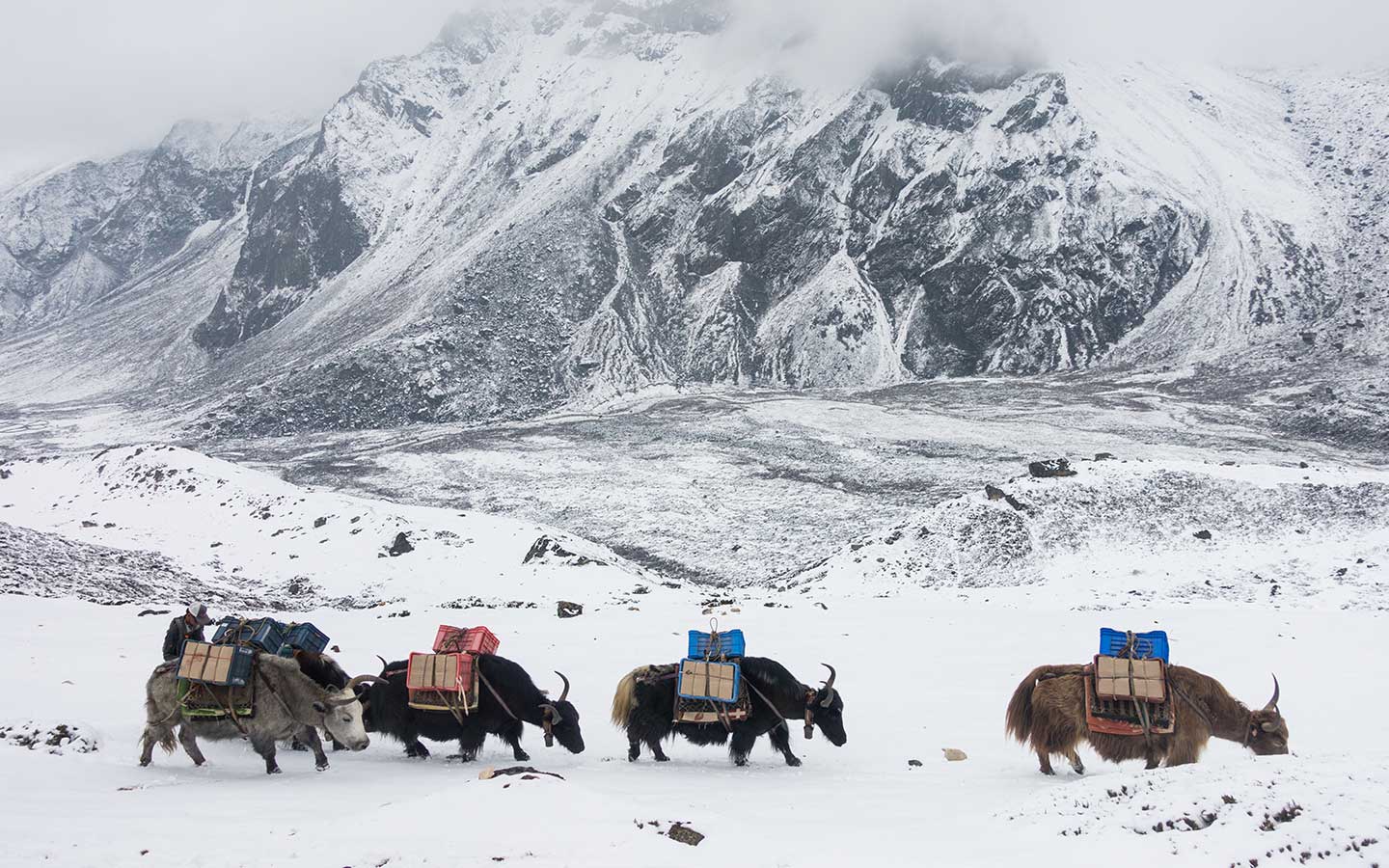
Everest Base Camp may seem just another hike with a few jagged trails, steep hills, and small settlements to stopover. Frankly, the trek is quite challenging with uneven terrains, sharp ridges, and stone stairs.
Most hikers are bothered about how high is Everest Base Camp as it adds the difficulty level. With each ascent, trekkers will have to battle low atmospheric pressure and frigid weather. Here are the few trek difficulties that Everest Base Camp hikers may have to defy to reach the campsite.
1. Altitude Sickness
Trekkers are most likely to suffer from acute mountain sickness during the Everest Base Camp trek as they’ll ascend epic heights. Rising higher altitude would cause them difficulty in breathing and severe illness, which can be fatal at times.
Hence, trekkers shouldn’t even ignore a mild symptom like dizziness and headache while on the way to the Base Camp. If they have trouble sleeping or insomnia for a long time, then it’s better to stop climbing the trail immediately or take it slow.
It’s always better to have enough rest after going 500 to 700 meters high. Adapting to the weather and climate of the place before ascending high altitudes is a better way to prevent altitude sickness.
2. Everlasting Trails
The routes to Everest Base Camp will never be easy to traverse with continuous ups and downs. Likewise, the rough tracks running through feral forests and uninhabited regions are not just strenuous but distressing to put up.
The 62 km long trail has trekkers passing over the wooden bridge and scrambling cliffs to reach the base camp. It even has them climbing the edge of the hills and above the valley to arrive at the height of 17,500 ft, which is a bit depressing.
Nonetheless, anyone with the good physical condition and proper equipment can easily beat the trail. Trekkers will have to be physically and mentally tough to withstand the steep path that never seems to end.
Furthermore, hitting the gym at least a week or two before the actual trek is good. But it’s still better to have a month of fitness training and a strict diet regimen to improve physical stamina. Not just that, travelers can even take a few short treks to increase stability and build endurance.
3. Weather and Temperature
Weather on Everest Base Camp is unforeseeable with abrupt wind storms and cold. Trekkers who’re utterly new to the place will find the weather unbearable and nasty, mostly during winter. It’s hard to predict the weather on base camp, making the trek to base camp even more stressful and challenging.
Spring and autumn are usually a great time for a trek to Everest Base Camp as they put on nice weather. Also, the trails are not filthy or dry, making it more relaxing to navigate. Regardless of that, visitors have to be cautious as the base camp’s weather can change instantly.
Trekkers will have to be extra careful while walking the base camp in winter due to frigid weather. Also, heavy snowfall and powerful wind storms can often impede the journey, so; visitors have to stay up-to-date with the weather forecast.
Temperatures drop up to -17 Degree Celsius in the season, making it hard for trekkers to resist. Hence, visitors must bring warm clothes and insulated climbing boots, and trekking poles to climb the trail.
4. Accommodation
Accommodation can be a real problem depending on which time of the year you’re trekking the base camp. Usually, trekkers won’t have trouble getting a room as the accommodation options are varied. But, on various occasions, they’ll be struggling to make reservations, mostly during winter when the trails are blocked with snow.
There are high chances of guest houses and lodges being shut down during winter, limiting options for hikers. Meanwhile, during peak trekking, tea houses are crowded with visitors worldwide, causing it hard to find the untenanted dwelling. Moreover, if the advance booking hasn’t been made, it’s tough for trekkers to get a room right away.
5. Hiring a porter and guide
Renting a private tour guide on Everest Base Camp is difficult for trekkers who’re on their own. Similarly, they’ll have to take care of a couple of things before hiring a local navigator, including their knowledge of the places and language.
Likewise, the trekkers should know that the porter accompanying them doesn’t carry more than 25 kg weight. So, if you’re planning to get many essentials, even needless, better get rid of them immediately.
Similar articles you may like:
